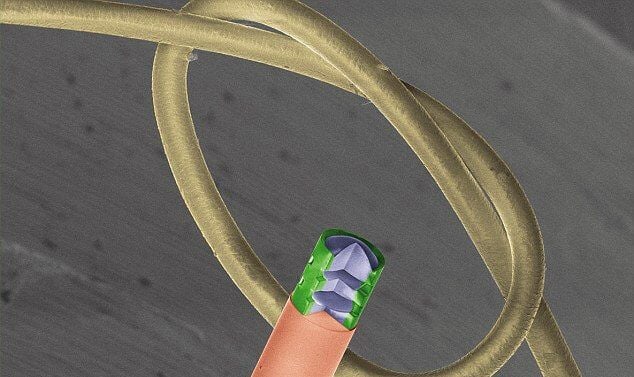The world’s smallest lens has been created with the help of 3D printing. It could revolutionize industries from surgery to surveillance.
Dr. Timo Gissibl and his colleagues at the University of Stuttgart, Germany have created a triplet lens device which they were able to 3D print directly onto an optical fiber.
The impressive device can capture incredibly sharp images. It can be attached to the end of an optical fiber, so the lens is thin enough fit inside a syringe needle.
As well as huge benefits for medicine, this 3D printed device could mean that cameras (and also surveillance cameras) of the future may be the width of a human hair. Researchers believe the technology could also benefit robotics and drone technology too.
In the Nature Photonics journal, Dr. Gissibl and colleagues said: “Current lens systems are restricted in size, shape and dimensions by limitations of manufacturing. Multi-lens elements with non-spherical shapes are required for high optical performance and to correct for aberrations when imaging at wide angles and large fields.”
How Does the World’s Smallest Lens Work?
Dr. Gissibl and his colleagues at the University were able to print the 3D multi-lens system directly onto the end of an optical fiber by using short pulses of light to harden the material. Researchers say that these lenses can be printed directly onto image sensors or even the tip of an endoscope.
The researchers are hopeful of the advances of this technology and say that they could even print directly onto image sensors or the tip of an endoscope.
The researchers added: ‘The unprecedented flexibility of our method paves the way towards printed optical miniature instruments such as endoscopes, fibre-imaging systems for cell biology, new illumination systems, miniature optical fiber traps, integrated quantum emitters and detectors, and miniature drones and robots with autonomous vision.”
What do you think of this technology? Let us know in the comments.
License: The text of "World’s Smallest Lens: 3D Printed, Thinner Than a Hair" by All3DP is licensed under a Creative Commons Attribution 4.0 International License.

